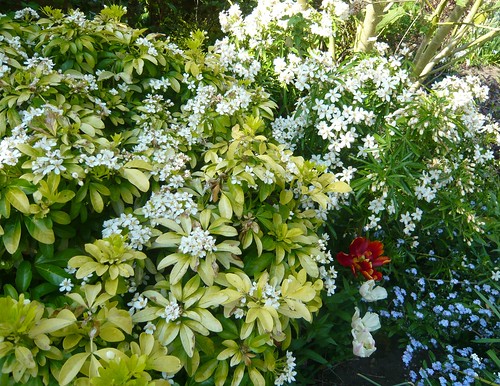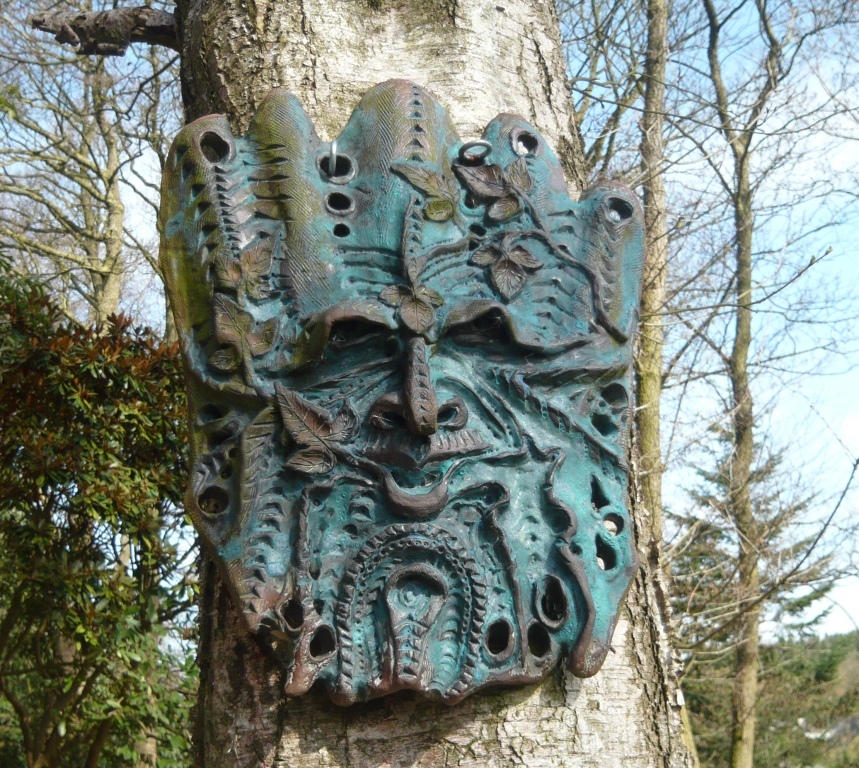Garden Advice to a Daughter
These notes are designed as advice to a daughter who has just moved into a 1920’s house with a long, narrow back garden and a postage stamp sized front grass patch.
Current Layout and Issues
- The front is open to cats and the quiet road with a footpath at one side leading to the door, edged by a rough hedge.
- The other side of the front is partnered to a well kept neighbors garden fence and a motley collection of shrubs. Under the bay window is ruble trouble.
- The extended kitchen at the rear provides a small sit’out’ery and place for pot plants.
- A high trellis fence along the length of the garden displays nothing much and there is only a pencil strip of soil at its base.
- I don’t expect the garden to look like this next time I visit but annuals and begonias can add a splash of colour

Quick Fixes
- Cut and edge the grass at the front even though the ground is very uneven. Don’t worry about the weeds in the grass until you can call it a lawn.
- Lower the 6 foot high privet hedge to say 3 feet and make it narrower at the top than the bottom. An ‘A’ shaped hedge is easier to maintain. Privet, Yew and mixed hedges will regrow, only looking rough until next summer.
- Get the neighbors to cut down the overgrown inappropriate sized tree that is over-shadowing your garden. At best a good trim of over hanging branches would be a start.
- Get a new lockable garden hut.
- Clear up old attempts at compost heaps by spreading or burying. I would go for a themo plastic box composter.
New Plans
- As you are working hard, often away from home, do not be too ambitious with short term plans. However gardening is a respite from too much brain activity – chill out!
- Think low maintenance, there is a lot you can do short of ‘greying’ over large parts of the garden.
- The uneven grass and cats are getting on your nerves – sorting this out is a priority.
- Even more than a pet, a garden is not just for Christmas. Some plant will have the ability to out live you and certainly may pets.
- Go with the flow, if it is not right first time modify your expectations and actions.
- When the season come round or the weather changes you will see things in a different light – there are no absolutes in gardening – be flexible!
Down to some Specifics
Herbs & Seeds
- I would major on those that add flavour to your food. They are the ones that tend to grow on long lived shrubby plants like Bay, Rosemary and Thyme.
- Fleshy herbs and salad that need to be grown fresh every year may be best supplied by your organic greengrocer. If you have the time, a salad seed mixture may be a good idea for cut and come again but they may bolt (flower early and go to seed). You could also try basil, coriander and parsley.
- Additionally I would consider several flavours of mint (to add to your cocktails!). Onion family provides vegetarians with welsh onions and chives which will return each year and garlic. All capable of many years of regular summer and autumn provision.
- I am not too up on seeds to eat but I would eat weed seeds if I thought that would stop weeds growing! Sunflower, pumpkin and marrows may be worth growing for their seed value but take up a lot of space.
Aesthetic Scented and Colourful Plants
- I would steer clear of most annuals – they take time and effort to grow or buy, plant, thin out, weed and feed. If you really want them and a cottage garden effect go for those that self-seed such as alyssum, cornflower, love in a mist, foxgloves and honesty.
- Lily bulbs in pots and narcissus provide good spring and early summer scent. They may come again each year but do decline. Crocus are a good alternative.
- Roses need there own space but a good, old rose climber may fit in near the bay window.
Low Maintenance and Structural Plants
- Dwarf conifers are probably a good investment. They come in various shades and styles from lime green to blue-grey, pyramids to prostrate ground covers.
- For height and apparent depth put blue shades as the end of the garden and warm shades at the from, it helps the perception of distance. Stripes in the lawn can do that but that is a bit advanced for your initial garden.
- There are lots of evergreen shrubs where one annual clipping would be enough but many get a bit overgrown. I would go for a Choisya for young, yellow leaves, white flowers and a distinctive scent
- I would think about planting your favorite herbaceous plants that die for winter and return in spring or summer. e.g. Lupins, Delphiniums, daisy varieties.
- Alpine plants tend towards low maintenance and low growing. Some are great for pot culture or at the front of a border.

Fruit Trees and Bushes
- Apple trees do not need to grow large, try a ballerina or step over tree if you want a couple of apples
- A single gooseberry bush will supply lots of fruit from the second year.
- Raspberry canes need a bit of care and picking in June as soon as ripe.
- Strawberries can be a lot of effort just to feed the birds and slugs
I know in our garden I cram in far too much and you have to decide on your own style. Minimalist styles are not a guarantee of less work. A final thought on this post is to consider a sculpture or eye catching center piece.
